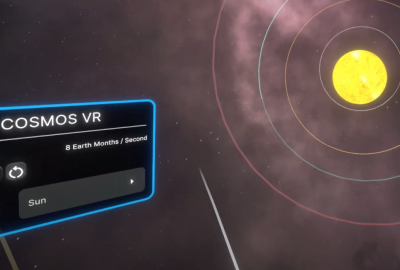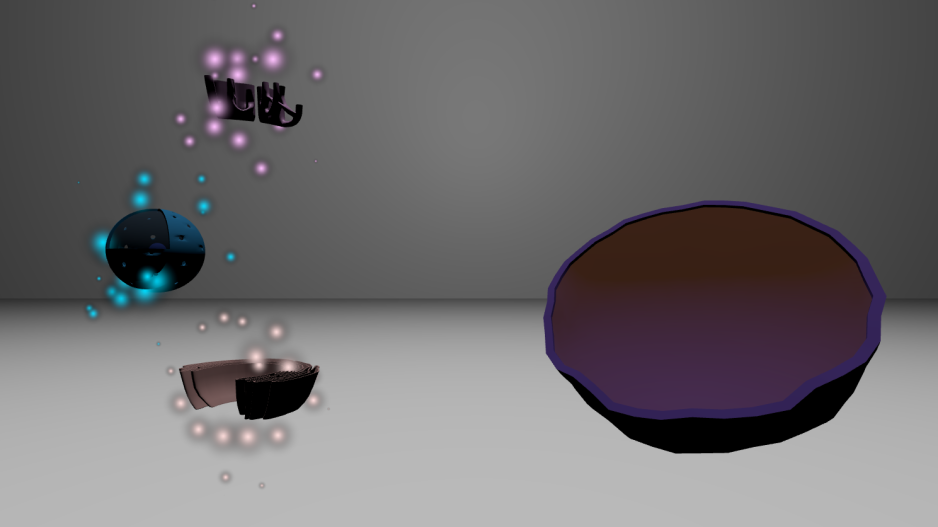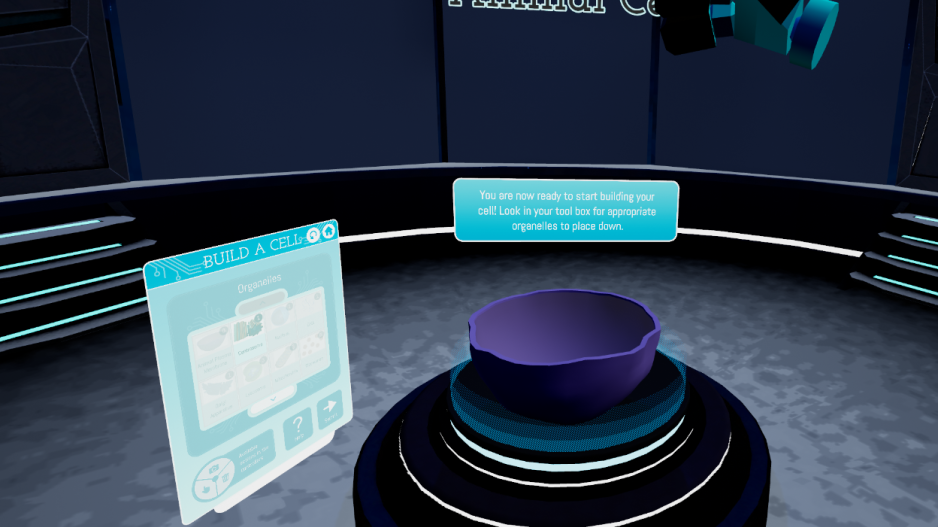
Project Introduction
The VR for Science Learning project looks to the near future, when schools will increasingly invest in inexpensive virtual reality equipment but may need guidance in how to evaluate the potential of specific immersive virtual reality (IVR) materials to support academic learning. We examine the idea that IVR simulations can impact affective and cognitive processing during learning, and that these mediating processes enhance science learning and interest in science for all learners, including specific subgroups. We will investigate these mechanisms using two science simulations in IVR, one involving the solar system (Cosmos) and one cell biology (Cells), and seek to determine how to use the affordances of IVR to make them more effective.
Goals
The goal of this Exploration project is to develop research-based principles for the design and evaluation of interactive science simulations in IVR that promote learning of academic material for teenage learners, with a special focus on underrepresented groups including minoritized groups, students living in poverty, English learners, and girls.
Research Plan and Timeline
For each of the two modalities, visual and auditory, we will run the following sequence of studies:
- Affective Quality (AQ) Research to determine the effect of each selected IVR design feature on students’ affective states.
- Value Added (VA) Research to test whether those design features that induced higher affective responses also increase learning outcomes.
- Media Comparison (MC) Research to test whether those design features that resulted in increased learning outcomes in the value-added research are more effective in IVR as compared to learning the same 3D materials displayed in 2D on a desktop computer.
Our timeline:
- Year 1: Develop IVR science tasks with visual design elements, conduct visual-factor AQ and VA studies.
- Year 2: Develop IVR tasks with auditory designs, conduct auditory-factor AQ and VA studies, and disseminate findings from Year 1.
- Year 3: Finalize IVR tasks for MC studies and disseminate research findings.

Example - Visual design feature (particle effect) investigated in Affective Quality Research

Example - Visual design feature (Color/Lighting) investigated in Value Added Research
Interested in this study? Participate in our VR research and get a gift card.
Learn More about participating in our VR research and get a gift card
Funder Info
PIs: Jan L. Plass, Richard E. Mayer (UCSB), Bruce D. Homer (CUNY GC)
Funder: US DOE IES

